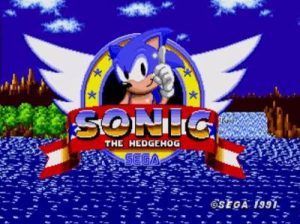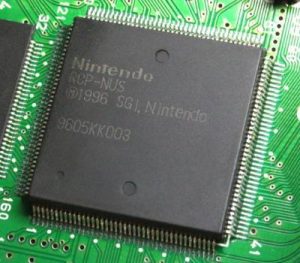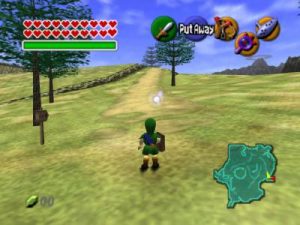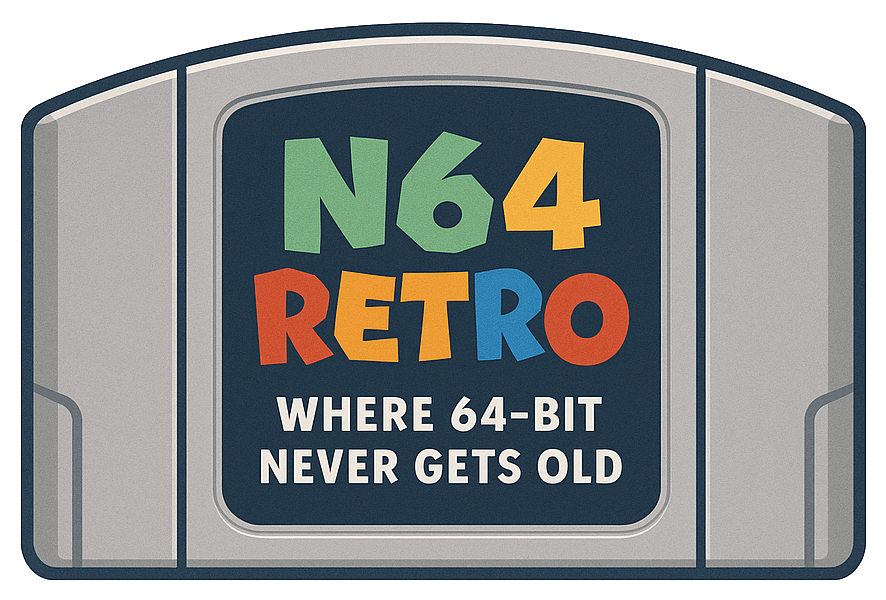The history of the Nintendo 64 — a spirited romp through silicon and cartridges
Pull up a stool — we’re going back to the mid-1990s, when video games were hurtlin’ from 2D sprites into full 3D worlds and the industry was in a right old tussle for the future. Nintendo, the company that’d rescued the games business in the 1980s, had to decide how to jump that gap. The answer they hatched was the Nintendo 64 (N64): a bold, somewhat stubborn console that championed real-time 3D, chunky cartridges, and a controller that changed how we played.
The industry at the time

By the early 1990s the console wars had shifted. Sega and newcomer Sony pushed 32-bit and CD-based systems, and developers were hungry for hardware that could render 3D worlds without collapsing under polygon counts or texture load. Nintendo wanted to leap to 3D but keep its tight game design philosophy. After broken talks with Sony (which famously led to the original PlayStation) Nintendo teamed up with Silicon Graphics, Inc. (SGI) — specialists in high-end graphics — to build something new, codenamed Project Reality. That partnership set the N64 apart as a console conceived around 3D from the ground up.
Technology and design breakthroughs

At the heart of the N64 was a 64-bit MIPS RISC CPU (the NEC VR4300 / R4300i) and a custom SGI-designed graphics/media processor often called the Reality Coprocessor (RCP). Together they handled geometry, texturing, audio, and other media tasks in ways that mainstream consoles hadn’t before. The RCP offloaded much of the grunt work, allowing richer 3D scenes, hardware z-buffering, anti-aliasing and texture filtering that made worlds feel smoother.
One choice that still sparks debate was storage: Nintendo stuck with ROM cartridges rather than CDs. Cartridges offered near-instant load times, durability, and cheat-proof saving for some titles — but they were expensive and limited in capacity versus discs. That decision helped some games shine (instant load-ups, tight design) but likely limited third-party support and overall library breadth compared with the PlayStation’s CD library.
The controller was another leap. Nintendo’s designers — led creatively by Shigeru Miyamoto and his teams — introduced an analog stick as a standard primary input (the first of its kind on a major console), plus a trigger and expansion port for accessories like the Rumble Pak and Controller Pak. Miyamoto and his teams shaped the controller in tight tandem with Super Mario 64’s design, so hardware and software evolved together. The Expansion Pak later doubled system RAM from 4MB to 8MB for more detailed graphics and complex worlds in titles that supported it.
The people behind the machine

Nintendo’s success with the N64 was as much about its creatives as its silicon. Shigeru Miyamoto — already famed for Mario and Zelda — steered game design decisions, guiding Super Mario 64’s camera and movement systems and helping define the controller’s form. Other internal leads included Takashi Tezuka and Yoshiaki Koizumi, who played significant roles on Mario and Zelda teams, while producers and engineers at Nintendo EAD (Entertainment Analysis & Development) translated Nintendo’s design philosophy into 3D gameplay. On the hardware side, SGI engineers designed the RCP and worked with MIPS/NEC for the CPU, a collaboration that married console-grade costs with workstation-grade graphics thinking.
Third-party studios also left a huge mark. Rare (a UK studio) delivered GoldenEye 007 and Banjo-Kazooie — titles that showed off the N64’s strengths in split-screen multiplayer and characterful 3D platforms. Rare’s relationship with Nintendo produced some of the console’s most beloved experiences.
Key games that defined the N64
A console’s soul is its games, and the N64 had a handful that rewired expectations.

Goldeneye 007 Super Mario 64 (1996) — Often credited with inventing the template for 3D platformers, Mario 64 taught players to think in three axes: movement, camera, and spatial puzzle solving. Its open levels, camera mechanics and tight controls became a template for future 3D games. Miyamoto’s close coupling of controller and game design paid off spectacularly.
The Legend of Zelda: Ocarina of Time (1998) — A masterpiece of pacing, design and technical ingenuity. Ocarina of Time introduced context-sensitive targeting (Z-Targeting), cinematic pacing, and a sprawling 3D overworld that still influences action-adventure design today.
GoldenEye 007 (1997) — Rare’s stealthy, cinematic shooter showed that first-person multiplayer could be a living room staple. Its mission design and split-screen deathmatch proved hugely influential on console shooters.
Mario Kart 64 (1996) and Star Fox 64 (1997) — Two examples of Nintendo bringing franchise polish to 3D racing and rail-shooting, both leveraging the N64’s strengths in local multiplayer and responsive controls.
Other standouts — Banjo-Kazooie, Perfect Dark, Wave Race 64 and Pilotwings 64 showcased varied genres, from platformers to racers to flight sims, proving the hardware flexible when developers learned its quirks.
Legacy and impact

Commercially the N64 sold respectably — around 32 million units worldwide — but it wasn’t Nintendo’s biggest winner; the PlayStation outsold it, bolstered by discs, cheaper production costs, and a flood of third-party titles. Still, the N64’s influence is unmistakable: it normalized the analog stick, advanced real-time 3D rendering in consoles, and produced several genre-defining masterpieces. Some decisions (notably cartridges over CD) are still debated by historians and designers — a reminder that technical choices always carry trade-offs.
On the culture front, the N64 era left us with iconic moments: Mario leaping into paintings, Link traveling through time, and friends squabbling over who gets to sit in the middle seat for GoldenEye multiplayer. Those memories shaped a generation’s understanding of 3D play.
Closing thought
The Nintendo 64 sits in history as a daring, idiosyncratic machine: part hardware experiment, part playground for brilliant designers. It wasn’t flawless, but its technical ambitions and the games that grew from them changed how players and developers thought about 3D worlds. For many of us, it was the console that taught us what 3D could feel like — and that, in itself, is a fine sort of legacy.

